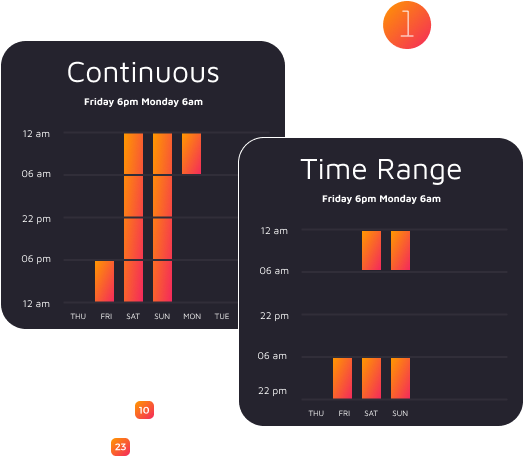Enterprise Team Management
Multi-Team Hierarchy
Put any number of teams together fast and to form a major incident response team on-the-fly which can be separated into multiple groups with a group administrator. One group from the nested groups within your major incident response group will act as the parent group. Each group retains its individual fixed and on-call schedules. Groups operate normally when there’s no major incident to resolve.
And, when a major incident kicks off, AlertOps automatically assembles your major incident response team with the various skill sets required to resolve a large-scale incident.
Import Users from Excel
Delegated Administration
You can also assign primary and secondary team members for on-call escalations, and designate managers and administrators who can escalate incidents and manage team schedules.
Broadcast Alerts to Groups

Explore Other Features
Make AlertOps work for you. Keep your business humming
Heartbeat Monitoring The heartbeat monitoring system in AlertOps notifies you when your monitoring system stops sending alerts, in real-time. Start your 14-day
Manual Alerting Send alerts to multiple teams instantly or as needed using templates, or open tickets yourself with manual alerting. Start your
Workflows AlertOps’ workflows automate system integrations, streamline your incident response, and enable you to better communicate with stakeholders. Start your 14-day trial
Enterprise Reporting Enterprise Reporting grows companies business performance by continuously monitoring KPI’s and AlertOps Smart Dashboard makes the work of key decision
Real-Time Collaboration During Incident Management Real-Time Collaboration is extremely important while resolving an incident. AlertOps helps resolve incidents faster by getting the
Mobile Incident Management with AlertOps AlertOps’ mobile app for Android and iOS puts the solution for Major Incident Management, IT Alerting, and
Extendable Incident Management: effortless integrations Extendable incident management in AlertOps effortlessly extends your incident management platform and connects your monitoring and help
Rich Alerting Be constantly updated about your incidents Rich alerting in AlertOps lets you be prepared for the unexpected by giving you
Automatic Escalations AlertOps has your back with automatic escalations. Quickly set up escalation groups and add on-call schedules. We take care of
Enterprise Platform AlertOps enterprise platform is built on the highly secure Microsoft Azure cloud infrastructure, and supported by an enterprise grade software
Alert Aggregation AlertOps’ Alert Aggregation allows you to connect your monitoring tools and get a view of all your incident data with
Role-Based Security Assign users to specific security roles as needed with AlertOps’ role-based security. Give team members the access and incident data
Live Call Routing Call routing in AlertOps route inbound calls in real-time so that callers never hit a dead end. With AlertOps,
Integrate With Tools Create custom two-way integrations and workflows and get the most from your monitoring stack. AlertOps’ no-code inbound APIs and
Flexible On-Call Schedules Flexible On-Call Schedules allow your organization to get the right people notified at the right time. This ensures lightning